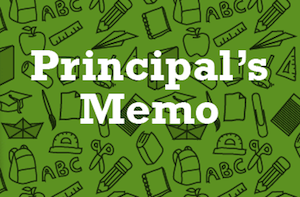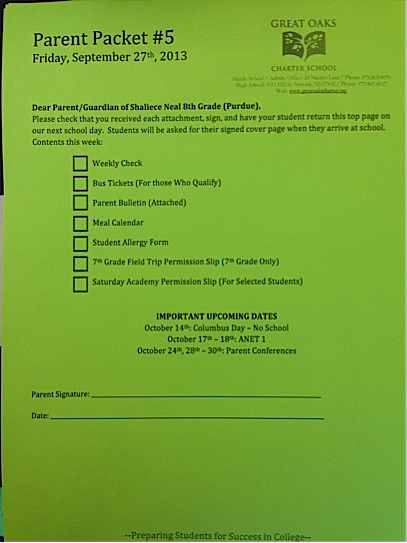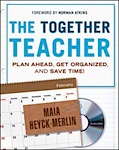10 Signs That You Have a Together School
I’m usually dabbling in the world of Together teachers, principals, leaders, and the occasional Together toddler. But lately I’ve been thinking a lot about schools and what makes the work best from a teacher’s perspective. After each workshop I lead, I ask, “What do you need from your school to support your Togetherness?”
Here are the types of requests I’ve heard from teachers—and what I’ve observed in great schools over time and across the country. If you have most or all of these things in place, it’s likely you are a Together School.
(1) Clearly published roles and responsibilities of the administrative team. Do your teachers know where to go if they need more non-fiction resources? If they have health benefits questions? Broken printers? Take time to publish who does what (however you define it), laminate it on colored paper, and hang it in every classroom. You could even include key district contacts or pertinent outside phone numbers.

(3) Written expectations for communication and technology norms. Sorry if I sound like an old-timer here, but things sure have changed and with texts, Facebook, cell phones, and email, it’s harder and harder to see clear boundaries. How often should the teachers check their email? Can they have their laptops up at staff meetings? How quickly are they expected to respond to families? Does your school ever text? In what situations?
(4) High functioning hardware and technology. Every time I make mention of the copier breaking or the attendance system going down, every teacher in the room groans a knowing sigh of familiarity. Make sure your copier, laminator, printer, and every other piece of hardware or technology you have works—and works well. If it doesn’t, ensure you can have repair people on the scene. And as for the software we have teachers use to input data or post lesson plans. . . test it YOURSELF. I remember a time I watched my teacher husband enter progress report data online, and the process required about 10 clicks per student. What a waste of teacher time!

(6) Respect for non-teaching teacher time. Be careful how many prep periods get eaten up by meetings. Give timely feedback on lesson plans and other instructional materials. One common complaint I hear these days goes like this: “Well. . . I got this feedback from my coach. . . but the materials for the lesson were already copied!” Also: End professional development on time. Respect is communicated by actions more than words.
(7) Well-stocked supply stations in each classroom. You don’t have to go crazy here, and even the Dollar Store will do. But let’s have markers, tape, glue, and paper in each classroom, or at least in a teacher supply room. And if your school is one where the students have to bring those goodies in for the year, give teachers some kind of storage unit to put all that stuff in. It doesn’t have to be fancy. A big bonus move: Keep hand sanitizer, cleaning solution, paper towels, band-aids and tissues in every classroom (and restocked regularly!). Your teachers will be grateful for the little things that count a lot.
(8) A clear inventory of available instructional materials. I see too many teachers photocopying entire books or rooting around in the back of closets—more wasted time. Or teachers “checking something out” and then hoarding the good stuff (umm. . . guilty as charged). Try using Google Drive or Dropbox to maintain a cloud-based inventory list of lab materials, books, and even photocopied packets so teachers can easily check them in and out.

(10) A ritualized and reliable family communication system. I know from experience that my daughter’s preschool sends a ton of one-off emails with details about Pumpkin Patch trips or school pictures, plus I find papers crumpled in her backpack with the coupon book I better send back or I get stuck paying 25 dollars. How about just sending everything home once per week? Great Oaks in Newark has a “green sheet” (click image at right to see a larger version) that goes out each Friday to all students and comes back signed on Monday. It includes behavior updates, allergy forms, and anything else the parents need, all in one weekly bundle.
Get it together!
Many of these ideas are free or require just a minor school budget expenditure. Most require a bit of upfront time, planning, and a small dose of staff meeting or professional development time. I firmly believe the investment is worth it to get your teachers in a groove. Together Schools = Together Teachers = Together Students = Together Learning!





































No mention of ‘learning’? I’d have though that comes first in a together, or any other, school!
This article is about ensuring that a school’s structures support learning. The fact that learning is the primary goal is implicit. The more teachers waste time fighting (or merely coping with) structural inadequacies, the less time they have to focus on their students. In my experience as a teacher in New York City, the obstacles preventing effective teaching and learning are the result of structural constraints, which includes many of the issues Maia has highlighted here. These might seem a no-brainer to folks who have worked in schools that are already (somewhat) together but this unfortunately isn’t the norm throughout the nation.
Great list…
Whatedsaid, in the newsletter the title said something about ‘together schools that support teachers. It is what I expected and plan to share.